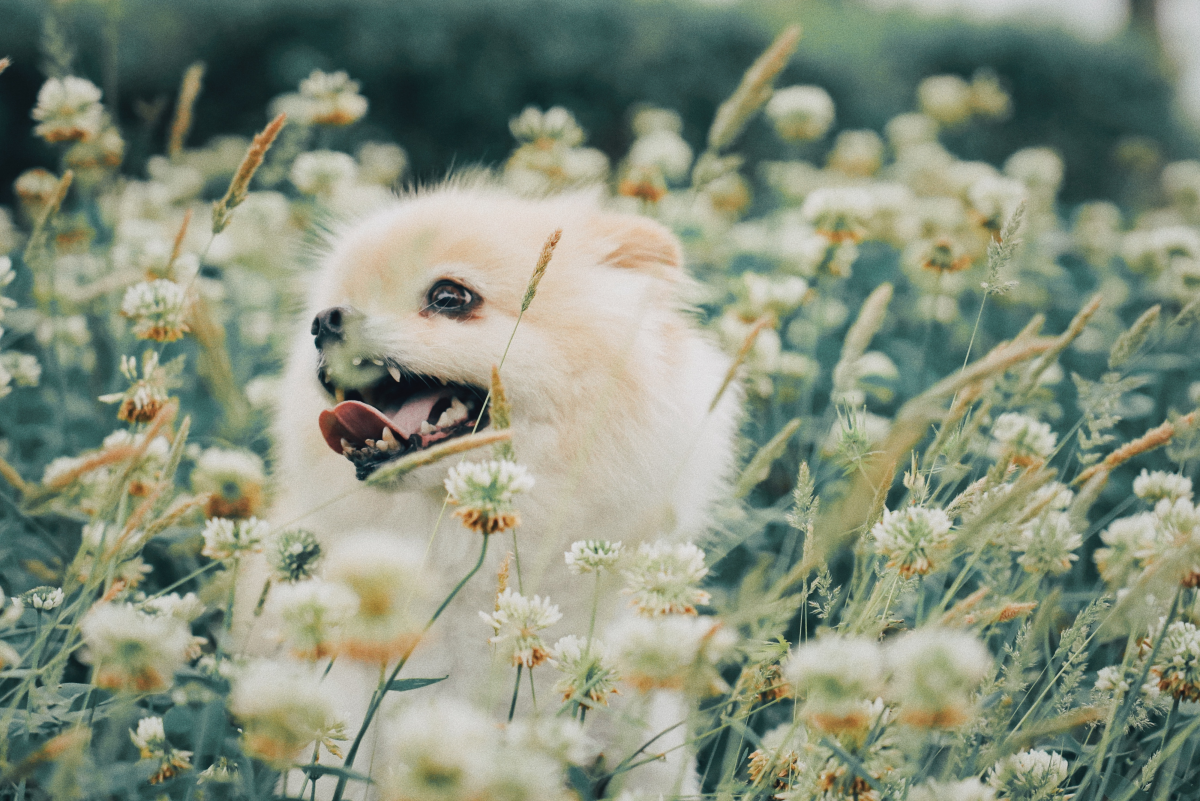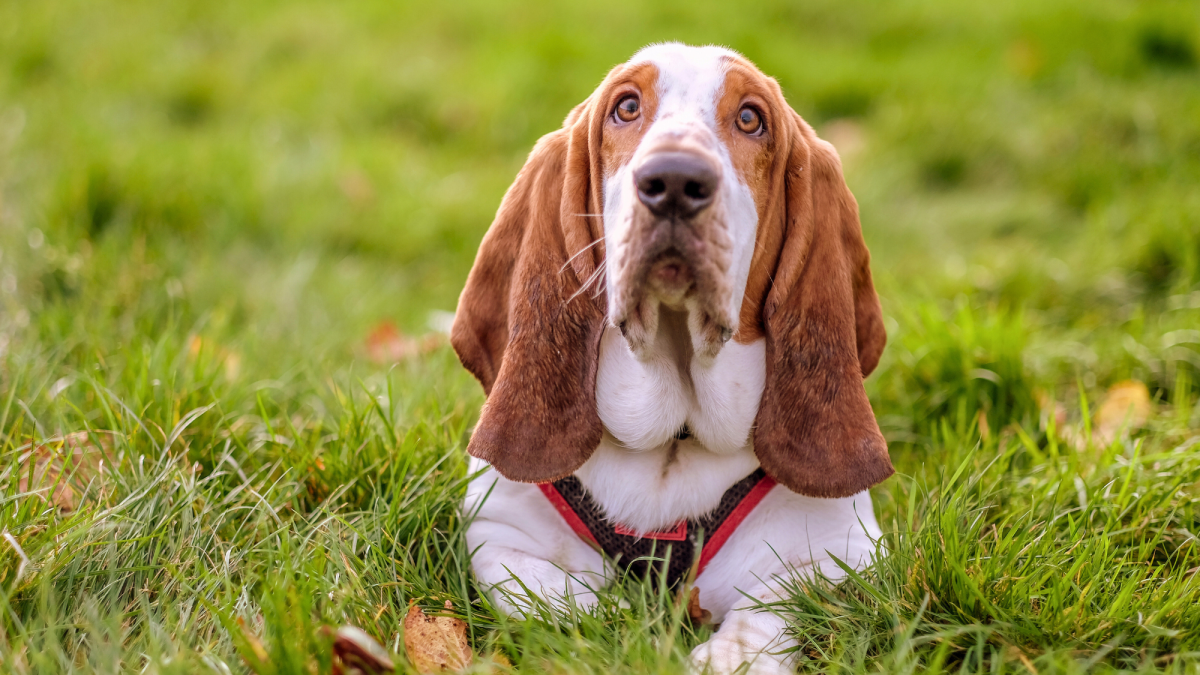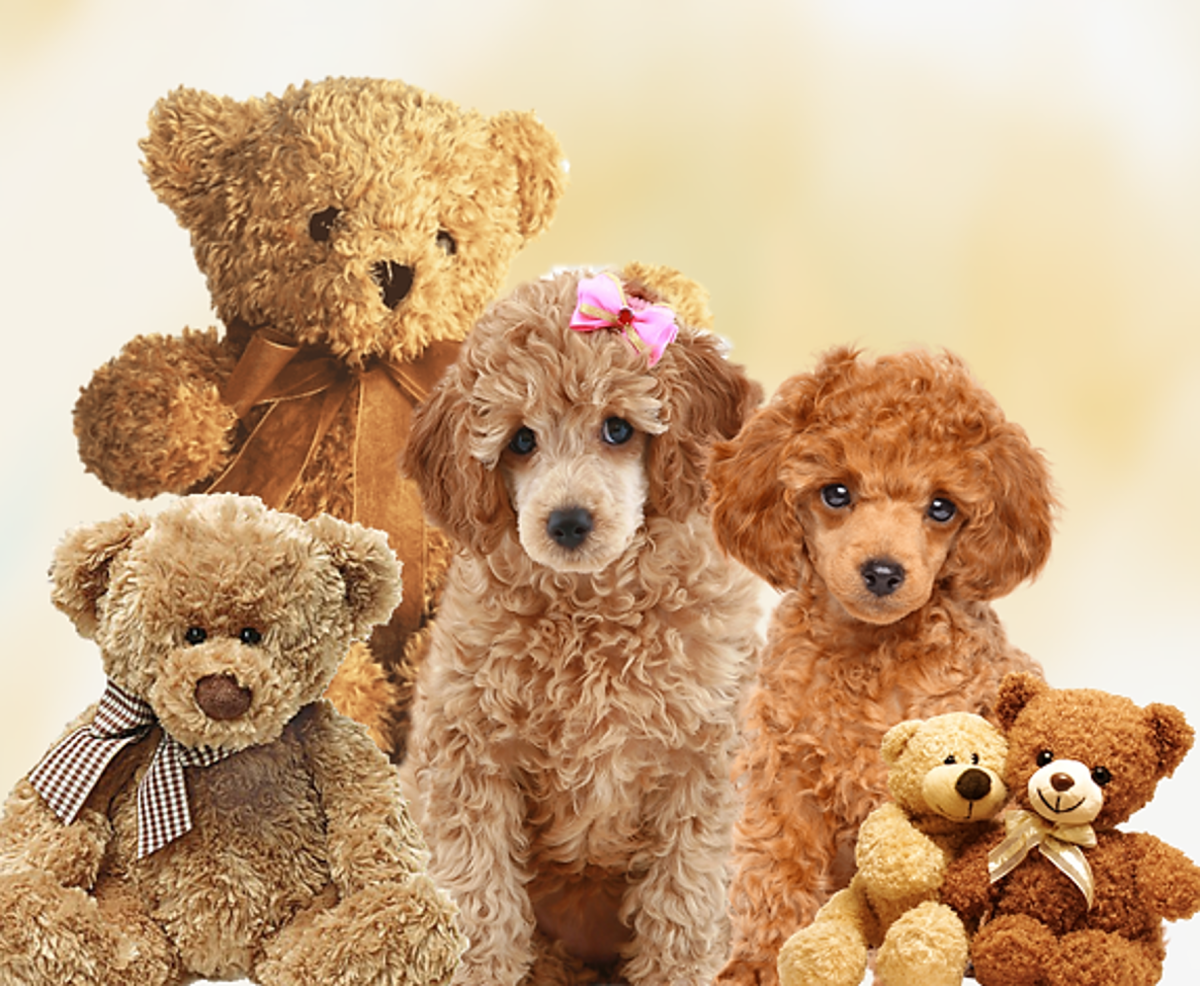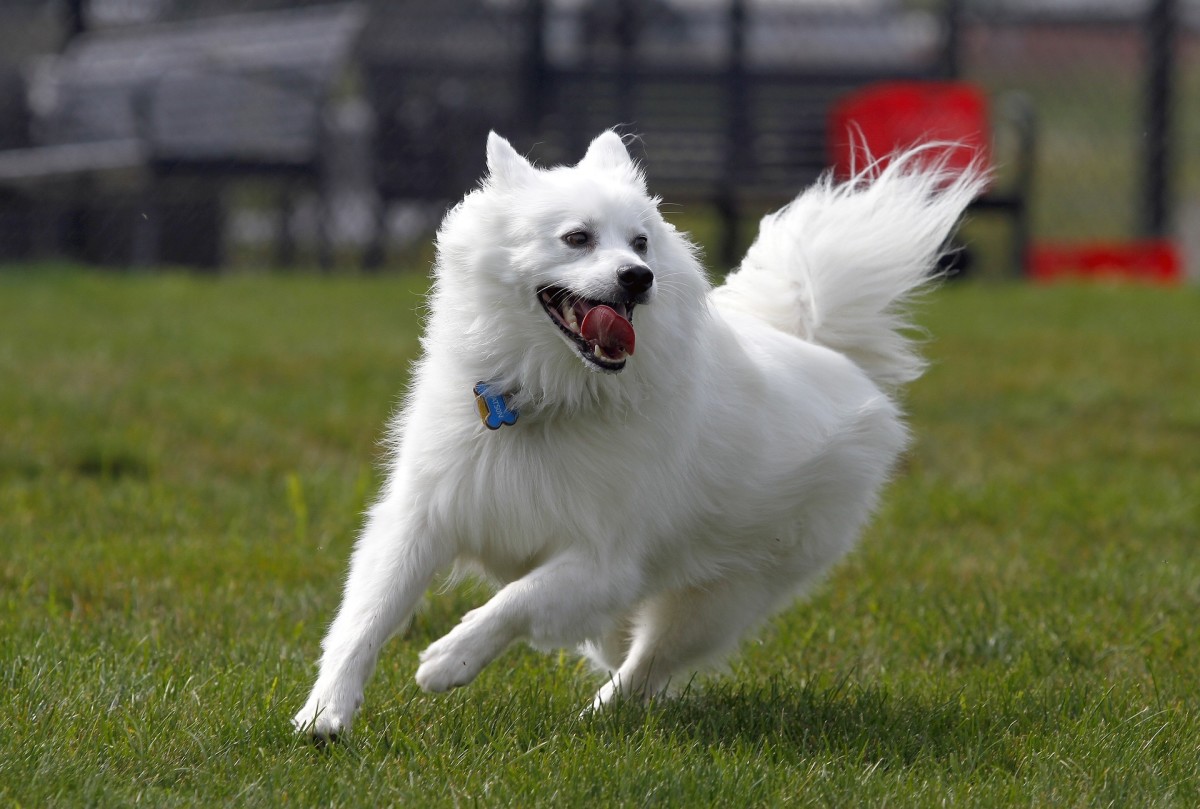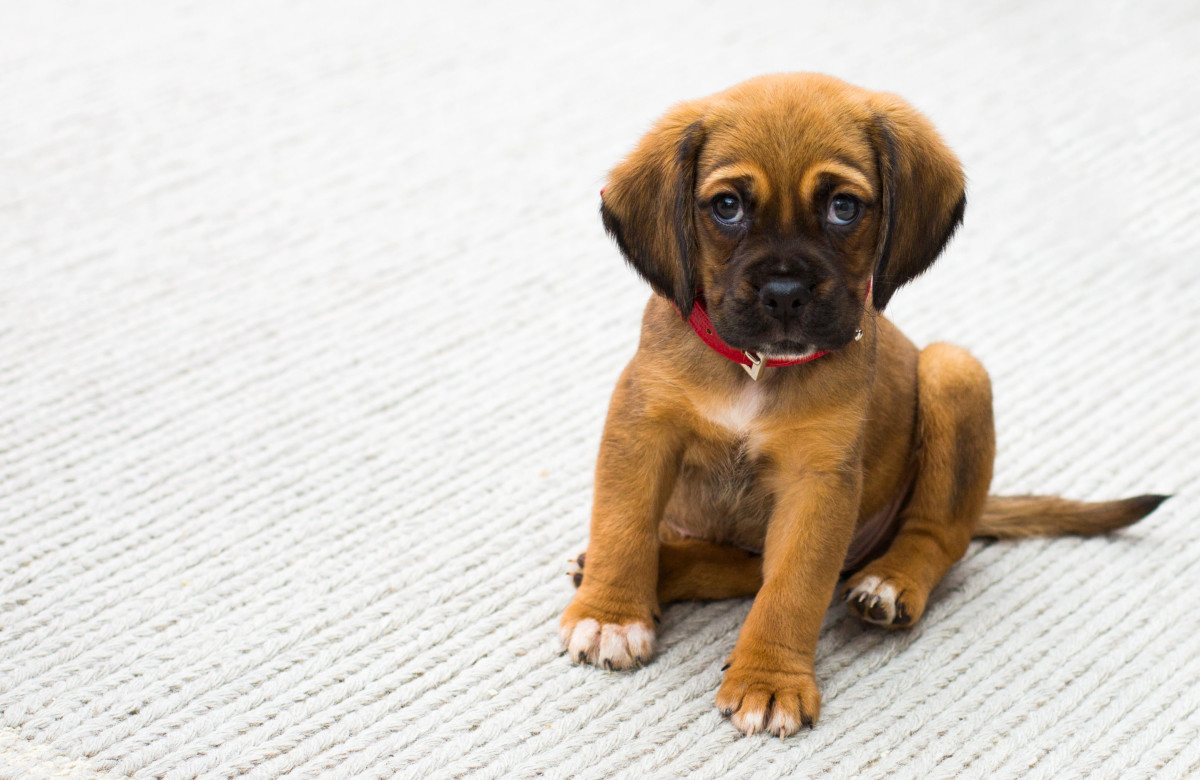- HubPages»
- Pets and Animals»
- Dogs & Dog Breeds»
- Selecting a Dog
The Right Dog For You- The Sporting Dog Pt.2
English Cocker Spaniel
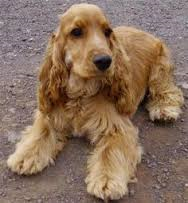
English Cocker Spaniel
The English Cocker Spaniel is a few inches bigger than its American cousin and is from three to eleven pounds heavier. It is less population than the American Cocker, and as a result, problems generated by puppy-mill production have been avoided. Descriptions include "alive with energy," "alert at all times" and "merry and playful." This lovable and affectionate breed gets along with just about everyone.
Behavior problems may include house soiling and food stealing.
Personality Profile
The English Cocker is a jolly, agreeable dog whose tail wags almost nonstop. He is happy and even exuberant, approaching everything from bath time to hunting time as events to be excited about- as long as he's with his owner. He is not a nervous dog, though, so his excitement is more joie de vivre than restlessness.
Care Requirements
Exercise
The merry English Cocker is a socialite who loves his walks. These are his opportunities to not only sniff and explore but to meet and greet. He is a hunter and will thrive on excursions to places where he can rustle up some bird scent. An adept swimmer and retriever, the English Cocker Spaniel will also gamely retrieve tennis balls along the shore.
Feeding
The English Cocker Spaniel needs an age-appropriate canine diet tailored to his activity level and metabolism.
Grooming
The fine, silky fur of the English Cocker- particularly the feathering- needs regular brushing to keep him looking his best. The long hair tends to tangle and must be kept free of debris, dirt, and things that will naturally collect there during the course of the day. His long, heavy ears lie close to his head, which makes them prone to infection. They must be tended to almost daily so that they stay clean.
Health
The average life span of the English Cocker Spaniel is 12-15 years. Breed health concerns may include ear problems; familial nephropathy; hip dysplasia; and progressive retinal atrophy (PRA).
Training
Responsive, intelligent, eager, and with a strong desire to please, the English Cocker is a joy to train and truly thrives with it. Besides his hunting training, he quickly learns household manners and is competitive in all kinds of canine activities, from obedience to agility to canine freestyle. His adoring eyes and silky coat make him a favorite for pet therapy visits.
English Cocker Spaniel
Dimension of the Temperament
| Level of Dimension
| |
|---|---|---|
Indoor activity
| High-Med.
| |
Outdoor activity
| High
| |
Vigor
| Med.
| |
Behavioral constancy
| Med.-Low
| |
Dominance to strange dogs
| Med.-Low
| |
Thomas to familiar people
| Low
| |
Territoriality
| Low
| |
Emotional stability
| High
| |
Sociability within family
| Very high
| |
Sociability with children
| Very high
| |
Sociability with strangers
| Very high
| |
Learning rate
| High
| |
Learning obedience
| High
| |
Learning problem solving
| Med.
| |
Watchdog ability
| High
| |
Guard dog ability
| Low
|
English Springer Spaniel
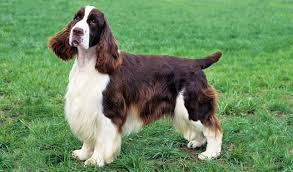
English Springer Spaniel
Personality Profile
The typical English Springer Spaniel is much like his cousin, the English Cocker Spaniel- merry, affectionate, playful, and an all- around lovable dog. He is intelligent and even-tempered, a quick learner, and a respectful partner. He loves to swim and is attracted to water, whether it be a lake or a mud puddle. The Springer is great with children and with most animals, although he can sometimes be possessive of those he loves most. Because he bods so strongly with his family, he sometimes has a hard time being left alone and can develop a nuisance barking problem.
The English Springer Spaniel is a medium-sized sporting dog with a close, straight-haired coat. Descriptions include "full of high-spirited affection" and "a dog that can keep on going under difficult hunting conditions, even more enjoying what it is doing." However, no dog should behave viciously toward handlers and strangers. Excessive timidity in the (show) ring is a fault, suggesting that some show these behaviors.
Behavior problems may include destruction and barking when left alone, jumping on people, playful barking easily stimulated by the barking of other dogs, timidity and phobias and, food stealing.
Care Requirements
Exercise
The most exercise the Springer gets, the better. Happy to accompany you anywhere and everywhere, he will gladly get up from his bed to join the family activities. Several brisk walks a day are necessary to keep him physically and mentally happy.
Feeding
The English Springer Spaniel needs a high-quality diet. This breed has a tendency to gain weight easily, so it's important not to overfeed him.
Grooming
The Springer's fine coat needs regular brushing and attention. The feathering on his ears and extremities must be kept clean and free of knots and tangles. His ears should be checked often for signs of infection, and occasional baths bring out the white in his coat.
Health
The average life span of the English Springer Spaniel is 12-14 years. Breed health concerns may include ear infections; epilepsy; hip dysplasia; phosphofructokinase (PFK) deficiency; and progressive retinal atrophy (PRA).
Training
Springers want to do whatever you ask, and they quickly catch onn to training. This athletic breed enjoys learning and can participate in sports like hunting, tracking, agility, obedience, flyball, freestyle, and anything else you might want to try. Socializing them with all kinds of people and other animals from puppyhood will pay off as the Springer ages.
English Springer Spaniel
Dimension of Temperament
| Level of Dimension
| |
|---|---|---|
Indoor activity
| High-Med.
| |
Outdoor activity
| Very high-High
| |
Vigor
| High-Med.
| |
Behavioral constancy
| High-Med.
| |
Dominance to strange dogs
| Med.-Low
| |
Dominance to familiar people
| Med.-Low
| |
Territoriality
| Low
| |
Emotional stability
| High-Med.
| |
Sociability within family
| Very high
| |
Sociability with children
| Very high
| |
Sociability with strangers
| Very high
| |
Learning rate
| High
| |
Learning obedience
| Med.
| |
Learning problem solving
| Med.
| |
Watchdog ability
| High
| |
Guard dog ability
| Low
|
Field Spaniel
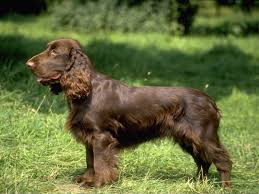
Field Spaniel
Personal Profile
The Field Spaniel is among the rarest of the spaniels, and those who know him say that he's probably the sweetest as well. Mild mannered and affectionate, the Field Spaniel is an easygoing although ready-for-anything companion who has fine hunting instincts paired with a real love of family. He is no sloth, and especially as a puppy, has lots of energy and can be quite playful. He can be reserved with strangers and should be socialized from an early age to help him feel as secure as possible in the world. Willing and able to participate in any number of activities, from leisurely hunts to agility to the tempered work of e therapy dog, the Field Spaniel is also content to cuddle- especially after a long walk.
The Field Spaniel has a longer body than the English Springer Spaniel, but is of about the same weight. Descriptions include "great endurance, moderate speed and agility" and "unusually docile"; it has a reputation for an "instinct" for problem solving.
Behavior problems may include excessive barking at noises, roaming and food stealing. It may also snore.
Care Requirements
Exercise
The Field Spaniel does best with regular and often vigorous exercise. He is sweet and calm in the house, but this does not mean that he can go without being taken for long walks or doing other things that get him out and about.
Feeding
The Field Spaniel enjoys food and needs a high-quality diet that keeps him at a healthy weight.
Grooming
The Field Spaniel's coat has some feathering that requires special care and should be brushed and combed to look its best. The coats of show dogs are often plucked so that the hairs lie just right. Like other spaniels, the thick-furred, long ears need to be kept clean to prevent infection.
Health
The average life span of the Field Spaniel is 10-12 years. Breed health concerns may include ear infections; hip dysplasia; and thyroid problems.
Training
Responsive and eager to please, the Field Spaniel is a dog who takes well to positive training. He is sensitive, and a harsh tone can backfire on him. When he's inspired, however, he can do almost anything. He needs to be actively socialized from puppyhood on to help him overcome any shyness and to improve his confidence.
Field Spaniel
Dimension of Temperament
| Level of Dimension
| |
|---|---|---|
Indoor activity
| Very high
| |
Outdoor activity
| Very high
| |
Vigor
| High
| |
Behavioral constancy
| High
| |
Dominance to strange dogs
| Med.-Low
| |
Dominance to familiar people
| Med.-Low
| |
Territoriality
| Low
| |
Emotional stability
| High-Med.
| |
Sociability within family
| Very high
| |
Sociability with children
| Very high
| |
Sociability with strangers
| Very high
| |
Learning rate
| High
| |
Learning obedience
| High
| |
Learning problem solving
| Very high-High
| |
Watchdog ability
| Very high
| |
Guard dog ability
| Low
|
Irish Water Spaniel
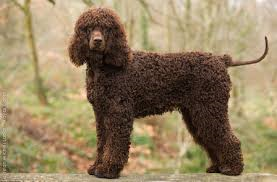
Irish Water Spaniel
Personal Profile
Although slightly reserved with strangers, with his family and friends, the Irish Water Spaniel is a high-spirited clown, always up for playing games and being part of the family fun. Intelligent, bold, and eager to please, yet with a stubborn streak, the Irish Water Spaniel has the courage and smarts to work long, honest days, as well as the playful and affectionate qualities that make him a beloved companion. He is generally a quiet dog, although he will alert his owners to a stranger's approach and so makes a good watchdog. Socialization from an early age in necessary to bring out the best in him; without it, he can become overly suspicious and guarded. This big, strong dog tends to drool and slobber.
The Irish Water Spaniel is an unusual-looking spaniel with a curly coat, topknot of loose curls down its forehead and ratlike tail. Descriptions include "clownish appearance"; "rugged endurance"; "sometimes timid"; and "loyal to those he knows, but forbidding to strangers."
Behavior problems may include sharp-shyness as a result of excessive dominance and fear, fear biting, irritable snapping, barking at slight noises and a tendency to drool. During hot summers the Irish Water Spaniel tends to overheat and become irritable. I wouldn't recommend this breed for households with children running in and out all day.
Care Requirements
Exercise
The athletic and hardworking Irish Water Spaniel does best with plenty of exercise. He especially loves to swim, and outings that involve visits to ponds, lakes, beaches, or even swimming pools are those he enjoys most. Because his coat is so protective, he is ready to go in any kind of weather.
Feeding
Irish Water Spaniels have healthy appetites that can cross over into gluttony if their food intake is not monitored. A high-quality, age-appropriate diet is best.
Grooming
Although he sheds little and does not need to be clipped like a Poodle, The Irish Water Spaniel has a coat that requires regular attention to keep it looking its best. It tends to mat, so regular brushing and combing is essential. It also needs to be kept trimmed so that it doesn't become unruly; this is best done by a professional groomer. The pendulous, heavy ears limit air circulation, which can lead to infection if not kept clean.
Health
The average life span of the Irish Water Spaniel is 10-13 years. Breed health concerns may include hip dysplasia and hypothyroidism.
Training
The Irish Water Spaniel is innately trainable, and he was the first sporting dog in the United States to earn an obedience title. Intelligent and ready to please, he does best with a firm but understanding trainer, as he will retreat from harsh commands and may not respond to well-intentioned but inconsistent requests. Socialization from puppyhood is a must, as it improves his confidence and trustworthiness.
Irish Water Spaniel
Dimension of Temperament
| Level of Dimension
| |
|---|---|---|
Indoor activity
| High-Med.
| |
Outdoor activity
| Very high
| |
Vigor
| High
| |
Behavioral constancy
| High-Med.
| |
Dominance of strange dogs
| Low-Very low
| |
Dominance to familiar people
| High-Med.
| |
Territoriality
| High-Med.
| |
Emotional stability
| Low
| |
Sociability within family
| Med.-Low
| |
Sociability with children
| Very low
| |
Sociability with strangers
| Low-Very low
| |
Learning rate
| High
| |
Learning obedience
| Low
| |
Learning problem solving
| Med.
| |
Watchdog ability
| Very high
| |
Guard dog ability
| High-Low
|
Sussex Spaniel

Sussex Spaniel
The Sussex Spaniel, like the Clumber, has short legs and a longer body than most of the other spaniels, which make it slow but sturdy in the field. Descriptions include "slow mover and not too difficult to train," "sometimes bold," "passively stubborn in obedience," "not indiscriminately friendly."
Behavior problems may include house soiling and howling and a slight possibility of a sudden but short-lived aggressive out burst usually leading to s growl and snap, but not a bite, if the dog is pushed or annoyed too much.
Personal Profile
The Sussex Spaniel is easygoing and friendly, but he can be slow to warm up to people at times. However, he is attached to his family and will follow them around everywhere. He is excellent with children and other animals. The Sussex can be a bit more territorial than the other spaniels, and he likes to bark.
Care Requirements
Exercise
The Sussex doesn't need a lot of exercise, but he will enjoy a daily walk and playtime in the yard. The breed has a lower energy level than some other spaniels.
Feeding
The Sussex is a good eater who should be fed a high-quality food.
Grooming
The Sussex 's soft coat require brushing and need to be trimmed around the ears and feet. His ears need to be cleaned regularly as well; pendulous and thick, it is easy for an infection to get started in them, especially if a Sussex is doing what he was bred to do and hunts in wet or wooded areas. Because he is a low dog, his stomach and legs require extra attention, too. His large feature include droopy flews and eyelids, which necessitate frequent care.
Health
The average life span of the Sussex Spaniel is 12-14 years. Breed health concerns may include congenital deafness; ear infections; eye problems; hypothyroidism; patent ductus arteriosus (PDA); prostate disease; pulmonary stenosis; and tetralogy of Fallot (TOF).
Training
A basically happy-go-lucky dog, the Sussex has been known to assert himself, so it is important to begin working with him from early puppyhood, socializing him to everything to bring out the best in him. He learns quickly and is eager to please his owner.
Sussex Spaniel
Dimension of Temperament
| Level of Dimension
| |
|---|---|---|
Indoor activity
| High-Med.
| |
Outdoor activity
| Med.-Low
| |
Vigor
| Med.
| |
Behavioral constancy
| Very high-High
| |
Dominance a strange dogs
| High
| |
Dominance to familiar people
| High-Med.
| |
Territoriality
| High
| |
Emotional stability
| Very high-High
| |
Sociability within family
| High
| |
Sociability with children
| Very high
| |
Sociability with strangers
| High-Med.
| |
Learning rate
| Low
| |
Learning obedience
| Low
| |
Learning problem solving
| Low
| |
Watchdog ability
| High
| |
Guard dog ability
| Med.
|
Welsh Springer Spaniel
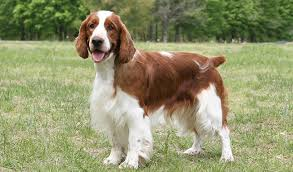
Welsh Springer Spaniel
The Welsh Springer Spaniel is another rare breed rarely seen in the United States. It is intermediate in size and strength between the English Cocker and the English Springer spaniels and has a rich, silky coat of white and dark red. Descriptions include "able to withstand extremes of heat and cold," "less exuberant than the English Springer," "a hardworking dog- no day is too long and no country tool rough....a faithful and wiling worker" and "shows its devotion more quietly than the English Springer."
Behavior problems may include barking in a city apartment and occasional aggressiveness. The A.K.C. stresses the need for training and says, "Welsh Springer Spaniels rarely forget lessons," from which we may infer that occasionally they do.
Personality Profile
The Welsh Springer Spaniel is a good-natured companion who is amenable to spending his time equally in the great outdoor and curled up by the fire. This unspoiled breed retains the hunting instincts that have been bred into it for centuries- bird sense that finds, springs, and retrieves game. He has plenty of stamina and can stay out all day, yet when he comes inside with his family, he is quick to settle down. Socialization helps him overcome a tendency to be somewhat shy, especially with strangers.
Care Requirements
Exercise
For a Welsh Springer Spaniel to be truly happy, he'll need to get out into the great outdoors as much as possible. He is a natural explorer, curious and enthusiastic about the world around him. If he isn't able to satisfy these desires outside, he may resort to destructive behaviors indoors.
Feeding
The Welsh Springer Spaniel is a good eater who should be fed a high-quality food.
Grooming
The Welsh Springer Spaniel's silk coat will look its best with regular attention. That means brushing and combing every few days- especially where there is some feathering, like on the ears, chest and legs. His ears should be checked for possible infections.
Health
The average life span of the Welsh Springer Spaniel si 12-15 years. Breed health concerns may include epilepsy and hip dysplasia.
Training
The Welsh Springer Spaniel shares the tractable nature of springers and cockers in general, so he is an agreeable dog to train. Bred to work closer to a hunter, the Welsh Springer has a strong desire to please, which can keep him focused on the lesson at hand. Harsh methods should never be used with this dog, who will retreat and be forever suspicious of an owner who does. With proper handling, the Welsh Springer excels at tracking, hunting, retrieving, and other sports and games.
Welsh Springer Spaniel
Dimension of Temperament
| Level of Dimension
| |
|---|---|---|
Indoor activity
| High-Med.
| |
Outdoor activity
| Very high
| |
Vigor
| High-Med.
| |
Behavioral constancy
| High
| |
Dominance a strange dogs
| Med.
| |
Dominance of familiar people
| Med.-Low
| |
Territoriality
| High-Med.
| |
Emotional stability
| Med.
| |
Sociability within family
| Med.
| |
Sociability with children
| High-Med.
| |
Sociability with strangers
| Low
| |
Learning rate
| High
| |
Learning obedience
| Med.
| |
Learning problem solving
| Med.
| |
Watchdog ability
| High
| |
Guard dog abilities
| High-Low
|
Vizsla
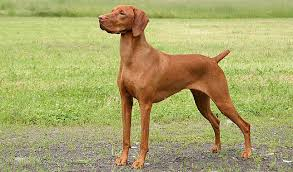
Vizsla
The Vizsla, or Hungarian Pointer, is a medium-sized sporting dog with a short, dark gold-colored coat. The breed all but disappeared in Hungary during the crises between the world wars, but survived and has become rather popular elsewhere in Europe and in the United States. Descriptions include "friendly" and "likes everyone indiscriminately."
Behavior problems may stem from its sociability, since when left alone it may chew the furniture as an anxiety response. It may also be startled easily by sudden city noises, and there is a trend toward timidity.
Personality Profile
A handsome animal, the Vizsla draws attention wherever he goes. The more he is exposed to, the gentler and better natured he becomes. If not sufficiently exercised or stimulated, however, his naturally energetic nature may lead him to indulge in destructive behaviors. Ignoring this need is not fair to the noble Vizsla, who is at heart a highly sociable and demonstrative dog. When raised properly, he is excellent with children who are old enough to manage his high energy. He gets along with other dogs and animals, although he shouldn't be trusted with small animals that could be considered game. The Vizsla's talents are many; he is a proven tracker, retriever, pointer, agility and obedience competitor, and a striking show dog.
Care Requirements
Exercise
Vizslas are lively, athletic dogs who thrive on exercise-- preferably being allowed to hunt over large areas. Without regular opportunities to hunt, they require several vigorous walks a day. They make great jogging or biking companions.
Feeding
The extremely active Vizsla is a hearty eater whose weight should be monitored. He needs the energy that food gives him but must be kept in shape. A high-quality, age-appropriate diet is best.
Grooming
The Vizsla's short, smooth coat is easy to keep him clean. A hound glove will loosen dead hair and stimulate the skin, and he should be brushed with a soft brush. Also, because he spends a great deal of time outdoors, his coat must be checked frequently for ticks and other parasites, and his long ears should be inspected often to ward off infections.
Health
The average life span of the Vizsla is 11-15 years. Breed health concerns may include allergies; ectropion; entropion; epilepsy; hip dysplasia; hypothyroidism; progressive retinal atrophy (PRA); sebaceous adenitis (SA); and von Willebrand disease.
Training
The Vizsla is a multitalented and trainable animal. That said, he is a high-energy dog who is easily distracted, and his training should be handled by someone who is persistent, patient, and uses reward based and creative ways to keep him focused. Giving this dog enough exercise is critical to his stability and to being able to work with him well.
Vizsla
Dimension of Temperament
| Level of Dimension
| |
|---|---|---|
Indoor activity
| Med.-Low
| |
Outdoor activity
| High-Med.
| |
Vigor
| High
| |
Behavioral constancy
| High
| |
Dominance to strange dogs
| Med.
| |
Dominance to familiar people
| Med.-Low
| |
Territoriality
| Low
| |
Emotional stability
| Low
| |
Sociability within family
| Very high-High
| |
Sociability with children
| Very high-High
| |
Sociability with strangers
| Very high-High
| |
Learning rate
| High
| |
Learning obedience
| High
| |
Learning problem solving
| Med.
| |
Watchdog ability
| High
| |
Guard dog abilities
| Low
|
Weimaraner
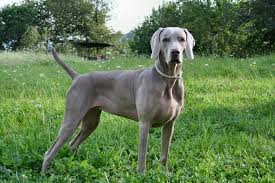
Weimaraner
The Weimaraner (pronounced Vy-mah-rah-ner) has a distinctive metallic-grey coat which, with its violet or amber eyes, creates an impression that led to its being called the Grey Ghost. Descriptions include "a real handful," "stubborn," "bold," "too impetuous for younger children."
Behavior problems may include indoor restlessness, destructiveness when left alone, excessive barking and, perhaps house soiling.
Personality Profile
The Weimaraner is a talented, friendly, obedient, alert, high-energy dog. He was bred to handle tough situations, and he doesn't back down easily. He learns rapidly and bores quickly. Effusively affectionate with his family and those he knows, he can be aloof and suspicious with strangers. The strong and athletic Weimaraner needs lots of outdoor exercise but is not an outdoor dog, craving regular attention from his people. He enjoys the company of children, but little ones are often jostled by the quick movements of his muscular body. Socialization from puppyhood is the best way to introduce him to all kinds of situations and build his confidence and trust.
Care Requirements
Exercise
The Weimaraner thrives on exercise, and if he doesn't get enough of it, will become bored and restless and resort to destructive behavior. He makes a great jogging or bicycling companion as an adult but shouldn't be overexercised as a puppy. A Weimaraner will most love the opportunity to hunt and extend himself in open spaces, and if this can be offered to him, he will benefit immensely. Otherwise, several long, vigorous walks are necessary on a daily basis.
Feeding
The athletic and energetic Weimaraner needs the highest-quality food possible, and it should be appropriate for his age.
Grooming
The shorthaired Weirmaraner is kept clean with an occasional brushing or rubdown with a hound glove. The glove will loosen dead hair stimulate the skin. The longhaired Weirmaraner should be brushed and combed weekly to keep his fine coat free from knots and debris. The breed's pendulous ears should checked for any signs of infection.
Health
The average life span of the Weimaraner is 10-12 years. Breed health concerns may include bloat; elbow dysplasia; hip dysplasia; hypertrophic osteodystrophy (HOD); and von Willebrand disease.
Training
To look at the Weimaraner's accomplishments, it is clear that with training he can master almost anything. That said, this breed that requires a persistent and patient trainer who understands that he learns quickly and bores easily. Heavy-handed training will inly make him wary and reticent. Given the encouragement and motivation to accomplish something, the Weimaraner will respond--and then some. Socialization from puppyhood is important in helping him develop trust and confidence.
Weimaraner
Dimension of Temperament
| Level of Dimension
| |
|---|---|---|
Indoor activity
| Very high
| |
Outdoor activity
| Very high
| |
Vigor
| Very high
| |
Behavioral constancy
| High
| |
Dominance to strange dogs
| High
| |
Dominance to familiar people
| High-Med.
| |
Territorality
| High
| |
Emotional stability
| High
| |
Sociability within family
| Med.
| |
Sociability with children
| Med.-Low
| |
Sociability with strangers
| Low
| |
Learning rate
| High
| |
Learning obedient
| Low
| |
Learning problem solving
| High
| |
Watchdog ability
| Very high
| |
Guard dog ability
| Very high-High
|
Wirehaired Pointing Griffon
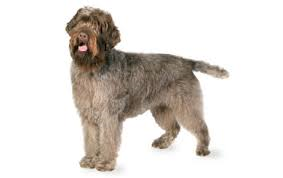
Wirehaired Pointing Griffon
The Wirehaired Pointing Griffon, a medium-sized dog, has a stiff, bristly coat and a square muzzle. Descriptions include "strong and vigorous"; "high-strung"; "terrierlike"; "nervous with strangers, strange situations, loud city noises and alarms"; "timid."
Behavior problems may occur as a result of excessive fears or phobias and may include house soiling, barking at novel stimuli and being a picky eater.
Personality Profile
The Wiredhaired Pointing Griffon ("Griff") is a wonderful companion for those who love the outdoors, Good natured and affable, he thrives on long walks through all kinds of environments and in all kinds of weather. Indoors, he is a mellow dog who wants to spend time with and be near his family. The Griff is great with children--he is patient yet playful, a large, solid dog with a stable disposition.
Care Requirements
Exercise
Daily exercise is necessary for this sporting dog. If not being used for the hunt, he'll need at least a 20-minute romp in a field or other outdoor area. Her loves to swim and makes an excellent jogging partner.
Feeding
The athletic Wirehaired Pointing Griffon is a hearty eater whose weight should be monitored. He needs the energy that food gives him but also must be kept in shape. A high-quality, age-appropriate diet is best.
Grooming
Naturally scruffy, the Griff benefits from a twice-yearly or so visit to a professional groomer for some stripping and cleaning up. He has a harsh coat that comes clean easily with occasional brushing, and he is naturally low shedding. His ears should be checked frequently for signs of infection.
Health
The average life span of the Wirehaired Pointing Griffon is 10-12 years. Breed health concerns may include hip dysplasia.
Training
Bred to work close to the hunter and be a truly all purpose dog, the Griff is easy to train. He is respectful and responsive, quickly picking up what is expected of him--especially if it has to do with finding game. Motivated with positive rewards and trained in short but frequent sessions, the Wirehaired Pointing Griffon will soon be minding his manners and doing what needs to be done to live in harmony with his family. Socialization only helps develop his outgoing personality.
Wirehaired Pointing Griffon
Dimension of Temperament
| Level of Dimension
| |
|---|---|---|
Indoor activity
| Very high
| |
Outdoor activity
| High
| |
Vigor
| High
| |
Behavioral constancy
| Low
| |
Dominance to strange dogs
| Med.
| |
Dominance to familiar people
| Med.-Low
| |
Territoriality
| Med.
| |
Emotional stability
| Low
| |
Sociability within family
| Med.-Low
| |
Sociability with children
| Low-Very low
| |
Sociability with strangers
| High-Med.
| |
Learning rate
| High
| |
Learning obedience
| High
| |
Learning problem solving
| Med.
| |
Watchdog ability
| Very high
| |
Guard dog ability
| Med.
|


